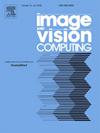SVC: Sight view constraint for robust point cloud registration
IF 4.2
3区 计算机科学
Q2 COMPUTER SCIENCE, ARTIFICIAL INTELLIGENCE
引用次数: 0
Abstract
Partial to Partial Point Cloud Registration (partial PCR) remains a challenging task, particularly when dealing with a low overlap rate. In comparison to the full-to-full registration task, we find that the objective of partial PCR is still not well-defined, indicating no metric can reliably identify the true transformation. We identify this as the most fundamental challenge in partial PCR tasks. In this paper, instead of directly seeking the optimal transformation, we propose a novel and general Sight View Constraint (SVC) to conclusively identify incorrect transformations, thereby enhancing the robustness of existing PCR methods. Extensive experiments validate the effectiveness of SVC on both indoor and outdoor scenes. On the challenging 3DLoMatch dataset, our approach increases the registration recall from 78% to 82%, achieving the state-of-the-art result. This research also highlights the significance of the decision version problem of partial PCR, which has the potential to provide novel insights into the partial PCR problem. Code will be available at: https://github.com/pppyj-m/SVC.
SVC:用于稳健点云注册的视景约束
部分到部分点云注册(PCR)仍然是一项具有挑战性的任务,尤其是在处理低重叠率时。与全部到全部的注册任务相比,我们发现部分 PCR 的目标仍然没有明确定义,这表明没有任何指标可以可靠地识别真正的转换。我们认为这是部分 PCR 任务中最根本的挑战。在本文中,我们没有直接寻求最优变换,而是提出了一种新颖、通用的视景约束(SVC)来确定不正确的变换,从而增强现有 PCR 方法的鲁棒性。大量实验验证了 SVC 在室内和室外场景中的有效性。在具有挑战性的 3DLoMatch 数据集上,我们的方法将注册召回率从 78% 提高到了 82%,达到了最先进的结果。这项研究还强调了部分 PCR 的决策版本问题的重要性,有可能为部分 PCR 问题提供新的见解。代码见:https://github.com/pppyj-m/SVC。
本文章由计算机程序翻译,如有差异,请以英文原文为准。
求助全文
约1分钟内获得全文
求助全文
来源期刊

Image and Vision Computing
工程技术-工程:电子与电气
CiteScore
8.50
自引率
8.50%
发文量
143
审稿时长
7.8 months
期刊介绍:
Image and Vision Computing has as a primary aim the provision of an effective medium of interchange for the results of high quality theoretical and applied research fundamental to all aspects of image interpretation and computer vision. The journal publishes work that proposes new image interpretation and computer vision methodology or addresses the application of such methods to real world scenes. It seeks to strengthen a deeper understanding in the discipline by encouraging the quantitative comparison and performance evaluation of the proposed methodology. The coverage includes: image interpretation, scene modelling, object recognition and tracking, shape analysis, monitoring and surveillance, active vision and robotic systems, SLAM, biologically-inspired computer vision, motion analysis, stereo vision, document image understanding, character and handwritten text recognition, face and gesture recognition, biometrics, vision-based human-computer interaction, human activity and behavior understanding, data fusion from multiple sensor inputs, image databases.
 求助内容:
求助内容: 应助结果提醒方式:
应助结果提醒方式:


